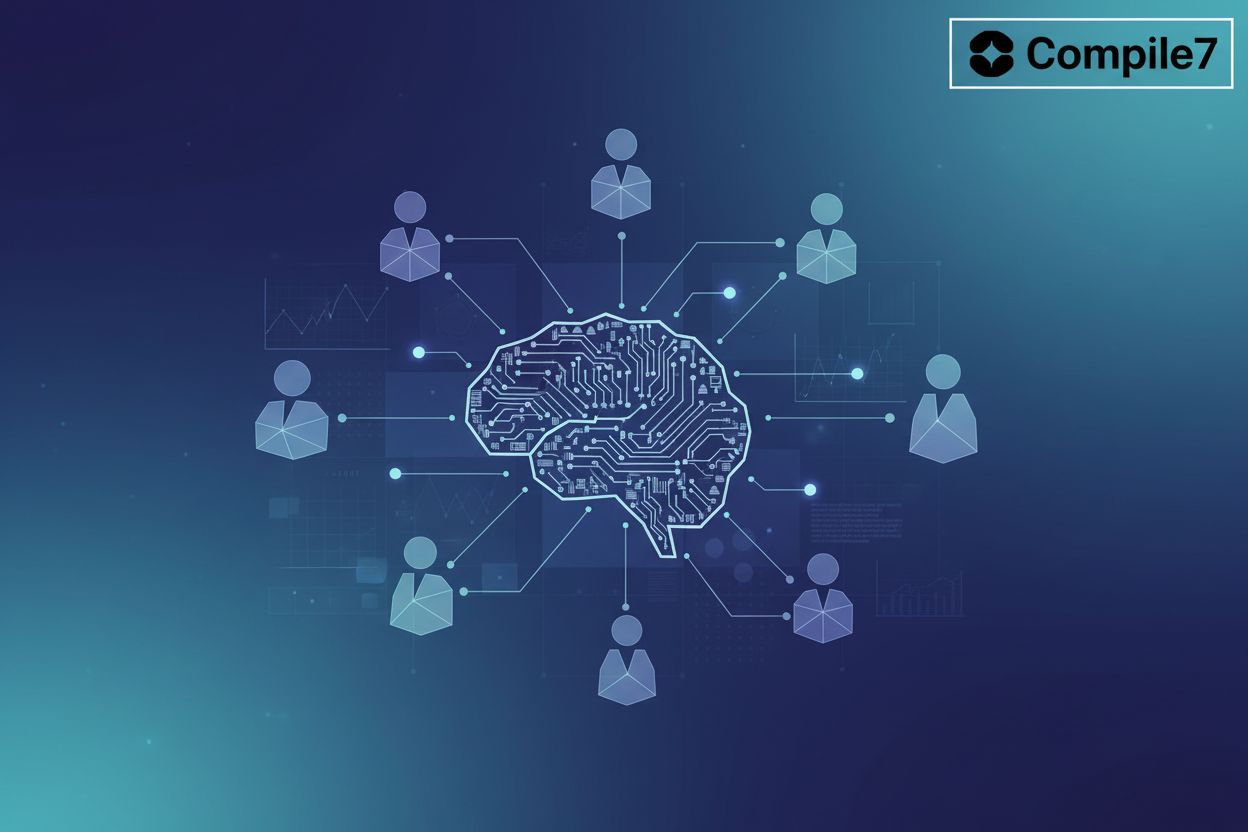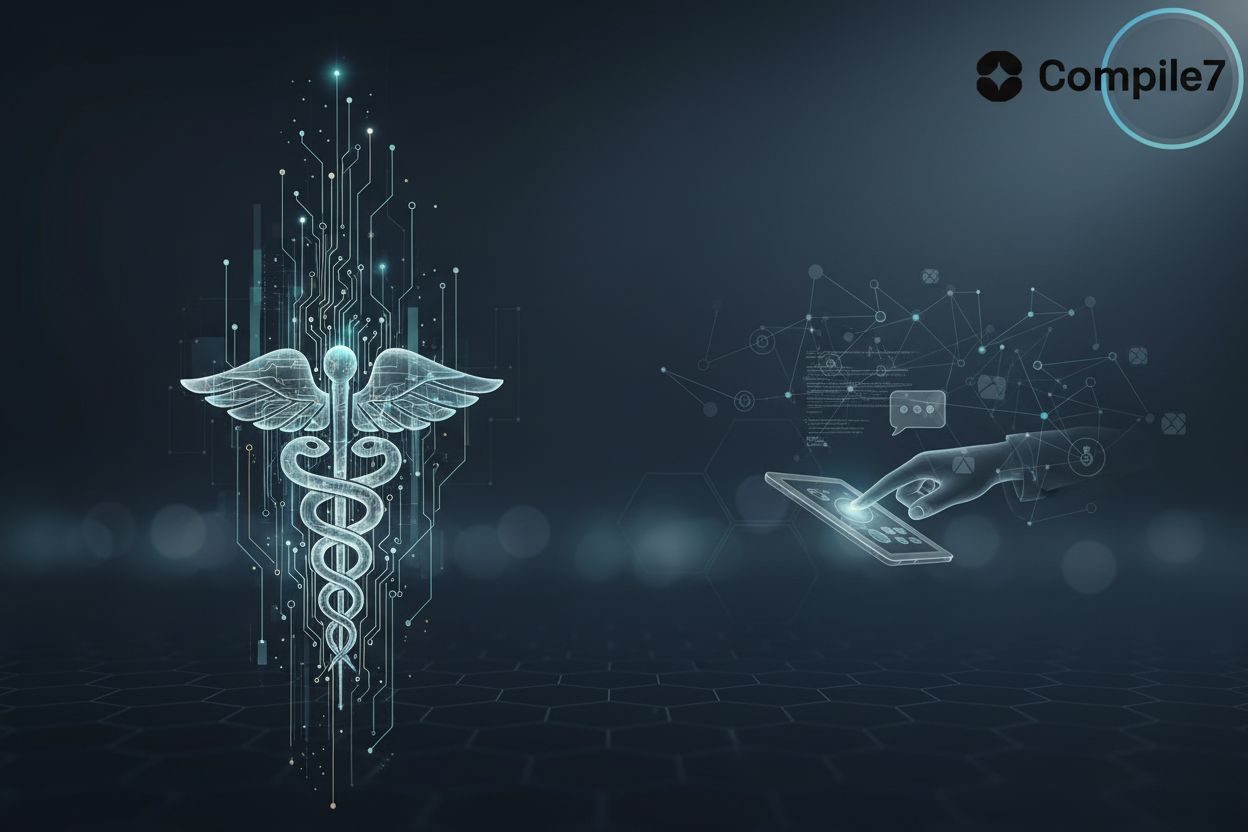Unlocking Efficiency: Integrating AI with RPA for Intelligent Automation
Introduction: The Synergistic Power of AI and RPA
Did you know that combining ai with rpa can increase data processing accuracy by up to 90% (3 Ways to Expand RPA with AI for Smarter Solutions - Intersog)? This impressive jump in accuracy is largely thanks to ai's ability to handle the messy, unstructured data that traditional rpa struggles with. While rpa is great at following strict rules, ai can learn from patterns and make decisions even when faced with variations, leading to fewer errors and more robust automation. Companies are increasingly turning to this powerful combination to streamline operations and improve decision-making. Let's explore how integrating ai and rpa creates intelligent automation.
Robotic Process Automation (RPA) automates repetitive, rule-based tasks. Rpa mimics human actions, using software robots to perform tasks like data entry and invoice processing. Rpa excels at structured business rules, consistently following the same set of instructions.
Artificial Intelligence (AI) empowers systems to learn, adapt, and make decisions. Ai simulates human intelligence, enabling systems to analyze data and improve over time. Understanding these core differences is crucial for effective integration.
Traditional rpa struggles with unstructured data and complex decision-making. A key limitation is its inability to handle variations and exceptions. Ai bridges these gaps, enhancing rpa's capabilities to handle more complex scenarios.
For example, rpa alone might struggle with processing invoices in varying formats. Ai, however, can extract relevant information from these unstructured documents, feeding the data to rpa for processing.
Combining ai and rpa creates intelligent automation for end-to-end processes. This integration improves efficiency, accuracy, and scalability compared to standalone solutions. Intelligent automation enables the automation of more complex and cognitive tasks.
According to Hyland, intelligent process automation (ipa) combines rpa, ai, machine learning (ml) and optical character recognition (ocr). Ipa can learn from its interactions and improve over time.
This synergy allows for more sophisticated automation, capable of driving informed decisions. Next, we'll look at specific applications of ai and rpa working together.
How AI Enhances RPA Capabilities
Is your rpa solution feeling a bit...robotic? Integrating artificial intelligence can inject some much-needed brainpower into your automation efforts. Let's explore how ai enhances rpa, making it more versatile and intelligent.
Ai algorithms excel at handling unstructured data, such as text, images, and voice. This capability significantly expands the scope of tasks rpa can automate.
- Natural Language Processing (NLP) allows rpa bots to understand and interpret human language. For example, bots can extract relevant information from emails, customer feedback, and support tickets.
- Optical Character Recognition (OCR) converts scanned documents and images into editable data. This enables rpa to process invoices, contracts, and other paper-based documents automatically.
Adding ai to rpa enables systems to make smarter decisions based on data analysis. Machine learning models can identify patterns and predict outcomes, allowing robots to take appropriate actions.
- Machine Learning (ML) models enable predictive analysis and anomaly detection. For example, ml can analyze sales data to forecast future trends, allowing rpa to adjust inventory levels accordingly.
- Ai algorithms can make decisions based on predefined criteria and learned patterns. For instance, an ai could be programmed to automatically approve expense reports below a certain dollar amount, flagging only those that exceed it for human review. This reduces human intervention and improves decision accuracy.
Ai and rpa can work together to create more personalized and responsive customer experiences. By analyzing customer data, businesses can tailor interactions and provide better support.
- Ai-driven chatbots provide real-time customer support and personalized recommendations. These chatbots use ai to understand context and intent, improving customer satisfaction.
- Personalization engines analyze customer data to create tailored experiences. For instance, recommendation systems can suggest products based on past purchases and browsing history, enhancing customer engagement and loyalty.
As UiPath notes, ai provides a cognitive upgrade for rpa robots, while rpa helps solve the "last mile" challenge of ai deployment, getting ai into production faster.
As a practical example, consider a healthcare provider using ai and rpa to streamline appointment scheduling. Ai can analyze patient data to identify high-risk individuals who need immediate attention, while rpa can automatically schedule appointments and send reminders.
A 2023 survey found 74% of hospitals now use some form of automation in their billing workflows, demonstrating the growing adoption of ai and rpa in healthcare.
By combining these technologies, healthcare providers can improve patient outcomes and reduce administrative costs.
Now that we've explored how ai enhances rpa capabilities, let's dive into specific applications and use cases.
Use Cases: AI-Driven RPA in Action
Ai and rpa are like peanut butter and jelly – good alone, but even better together. Let's explore practical applications of this dynamic duo.
Ai-driven rpa excels in intelligent document processing (IDP). For instance, ai algorithms can classify documents, extract relevant data, and validate information.
Rpa can then automate the subsequent steps, such as updating databases or triggering workflows. This leads to faster invoice processing, contract management, and purchase order handling, reducing manual effort and improving data accuracy.
In the financial sector, ai and rpa combine for robust fraud detection and prevention. Ai models monitor incoming data, flag irregularities, and identify potentially fraudulent activities. Rpa can then promptly notify the fraud detection team and take necessary actions, such as putting holds on accounts.
This enhances security and reduces financial losses.
Ai-powered chatbots are revolutionizing customer service. These chatbots handle customer inquiries, provide product recommendations, and resolve issues. Rpa executes actions behind the scenes, such as updating customer records and processing transactions. This improves customer satisfaction and reduces support costs.
By integrating ai with rpa, businesses can provide seamless, personalized customer experiences.
Now that we've explored these use cases, let's look at how to overcome implementation challenges.
Implementing AI-Driven RPA: A Step-by-Step Guide
Did you know that integrating ai into rpa workflows can boost data processing accuracy by up to 90%? This combination enables businesses to automate complex tasks and make smarter decisions. Let's explore a step-by-step guide to implementing ai-driven rpa.
First, identify processes that are repetitive, rule-based, and data-intensive. Look for tasks that consume significant time and resources. Evaluate the potential benefits of automation, such as cost savings, efficiency gains, and improved accuracy.
Prioritize processes that align with your business goals and offer the highest return on investment (roi). For instance, in healthcare, automating insurance claims processing can significantly reduce administrative costs.
Next, choose rpa platforms that offer robust ai integration capabilities. Evaluate ai tools based on their ability to handle specific data types and decision-making requirements. Consider factors such as scalability, security, and ease of use to ensure a seamless integration.
Design workflows that seamlessly integrate ai and rpa components. Develop ai models and train them on relevant datasets to ensure accuracy and reliability. Test and refine workflows in a controlled environment and monitor performance closely.
For example, a financial institution can use ai to analyze loan applications and assess risk levels. Rpa can then automate the approval process based on the ai's assessment. Another example involves ai-powered chatbots providing real-time customer support, while rpa executes actions like updating customer records.
Now that we've outlined the implementation steps, let's delve into the challenges and best practices for successful ai-driven rpa integration.
Overcoming Challenges in AI-Driven RPA Integration
Integrating ai with rpa presents several hurdles, but overcoming them unlocks significant potential. Organizations need a strategic approach to navigate these challenges successfully.
One of the primary challenges lies in ensuring data quality. Ai algorithms thrive on accurate, complete, and consistent data.
- Businesses must address data silos and integration challenges to create a unified data landscape.
- Implement robust data governance policies to maintain data quality. For example, if a retail company's ai analyzes customer purchase patterns using inaccurate or outdated data, it might lead to incorrect inventory forecasts or ineffective marketing campaigns.
A significant obstacle is the skills gap. Integrating ai and rpa requires expertise in both areas.
- Invest in training programs to upskill employees in ai, rpa, and related technologies.
- Hire talent with expertise in ai, rpa, and related technologies. For instance, a financial institution automating fraud detection needs data scientists and rpa developers.
- Foster a culture of continuous learning and innovation to keep up with evolving technologies.
Security and compliance are critical concerns when integrating ai and rpa. Protecting sensitive data is paramount.
- Implement robust security measures to safeguard sensitive data.
- Ensure compliance with data protection regulations like gdpr and hipaa. For example, healthcare providers must ensure that automated systems comply with patient data privacy regulations.
- Establish clear guidelines for ai and rpa usage to maintain data integrity and prevent misuse.
Addressing these challenges requires a strategic approach. By focusing on data quality, skills development, and security, organizations can successfully integrate ai and rpa to achieve intelligent automation.
Now that we've explored these challenges, let's delve into best practices for successful ai-driven rpa implementation.
Future Trends in AI and RPA
The convergence of ai and rpa is not just a trend; it's a fundamental shift in how businesses operate, promising unprecedented levels of efficiency and intelligence. So, what does the future hold for this dynamic duo?
Hyperautomation takes intelligent automation to the next level by combining ai, rpa, and other advanced technologies like process mining and ipass (integration Platform as a Service). Ipass is essentially a cloud-based suite of tools that helps connect different applications and data sources, making it easier to build and manage automated workflows across your entire IT landscape. It's about automating more complex and dynamic processes across the entire organization, not just isolated tasks.
- This holistic approach enables organizations to automate end-to-end workflows, connecting disparate systems and data sources. Imagine a retail company using hyperautomation to manage its supply chain: ai predicts demand, rpa automates order processing, and ipass ensures seamless data flow between suppliers and logistics providers.
- Hyperautomation enables greater agility and resilience, allowing businesses to adapt quickly to changing market conditions. A financial institution, for example, can use hyperautomation to adjust its risk assessment models in real-time based on new regulatory requirements and market data.
Cognitive automation represents a significant leap forward, utilizing ai-powered systems that can understand, reason, and learn like humans. This allows for automating tasks that require higher-level cognitive abilities, such as complex problem-solving and decision-making.
- In healthcare, cognitive automation can transform diagnostics by analyzing medical images and patient data to identify potential health issues with greater accuracy.
- The rise of cognitive automation is also transforming customer service. Ai-powered virtual assistants can understand customer intent, resolve complex issues, and provide personalized recommendations, improving customer satisfaction and reducing support costs.
As ai and rpa become more pervasive, it's essential to address the ethical considerations surrounding their use. This includes addressing bias, fairness, and transparency in ai algorithms.
- Organizations must ensure responsible and ethical use of ai and rpa technologies, building trust and accountability in automated systems. For example, in hiring processes, ai algorithms should be regularly audited to prevent discriminatory outcomes.
- Transparency is also key. Organizations should clearly communicate how ai and rpa are being used and allow individuals to understand how automated decisions are made.
Businesses must ensure that their ai-driven systems adhere to ethical guidelines and promote fairness and transparency.
As we look ahead, the integration of ai and rpa will continue to evolve, shaping the future of work and driving innovation across industries. In our final section, we'll summarize the key takeaways and offer a forward-looking perspective on the transformative potential of intelligent automation.
Conclusion: Embracing the Future of Automation with AI-Driven RPA
The integration of ai and rpa represents a transformative shift in business automation. As we conclude this exploration, it's clear that embracing this synergy is no longer optional but a strategic imperative.
Intelligent automation drives efficiency, reduces costs, and improves customer experiences. This combination enables businesses to automate complex tasks and make smarter decisions. Ai-driven rpa enhances accuracy and reduces errors in data processing, minimizing risks and improving compliance. This ensures that critical processes are executed flawlessly. Organizations that invest in ai and rpa will be better positioned for long-term success. They can adapt quickly to changing market conditions and customer demands.
Embarking on your ai-driven rpa journey requires careful planning and execution. A strategic approach will ensure that you achieve the desired outcomes. Assess your current automation capabilities and identify opportunities for ai integration. Determine which processes would benefit most from intelligent automation. Develop a roadmap for implementing ai-driven rpa solutions. This plan should include clear objectives, timelines, and resource allocation.
Compile7 specializes in developing custom ai agents that automate tasks, enhance productivity, and transform how your business operates. Our expertise lies in understanding unique business needs and tailoring ai-driven solutions accordingly.
Our Customer Service Agents streamline interactions, providing personalized support and resolving inquiries efficiently. These agents learn from each interaction, continuously improving their ability to assist customers.
Our Data Analysis Agents extract actionable insights from complex datasets, enabling informed decision-making. By automating data processing and analysis, businesses gain a competitive edge.
Our Content Creation Agents generate engaging and relevant content, freeing up valuable time for your marketing teams. From blog posts to social media updates, these agents ensure consistent and high-quality content.
Partner with experienced providers like Compile7 to accelerate your automation journey. Our expertise can help you navigate the complexities of ai and rpa integration.
The future of automation is intelligent, and the time to embrace it is now. By combining ai with rpa, businesses can unlock new levels of efficiency, accuracy, and innovation.






